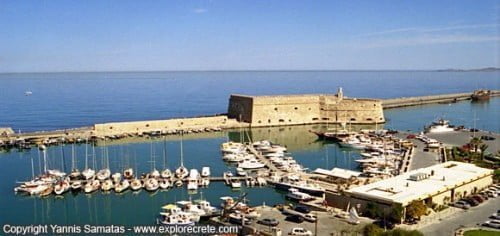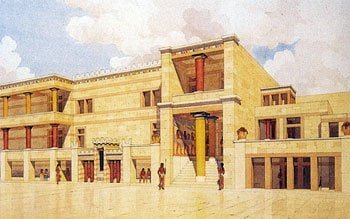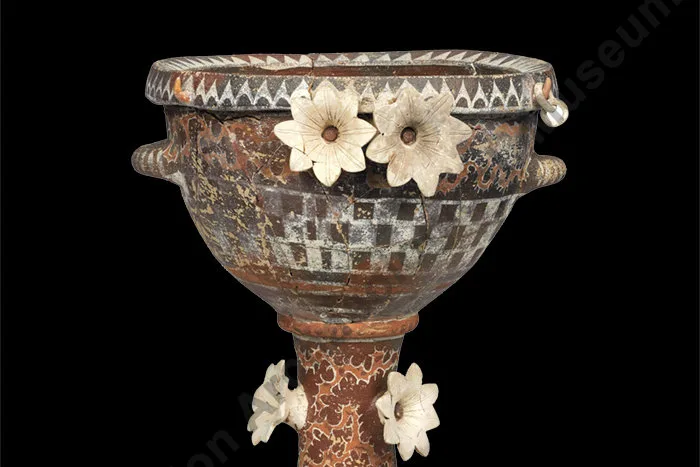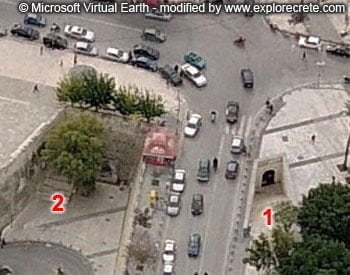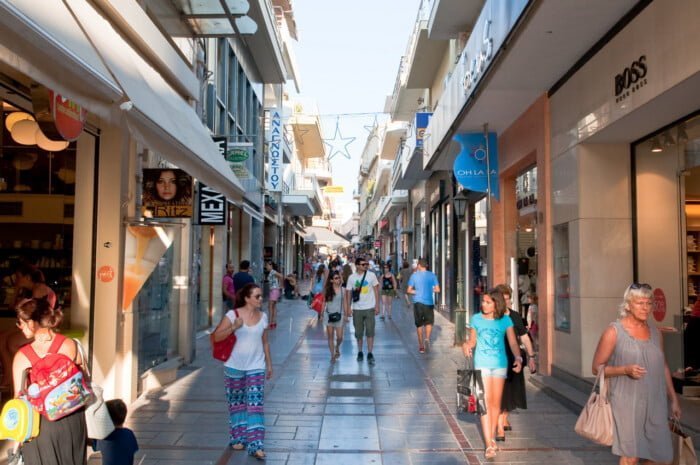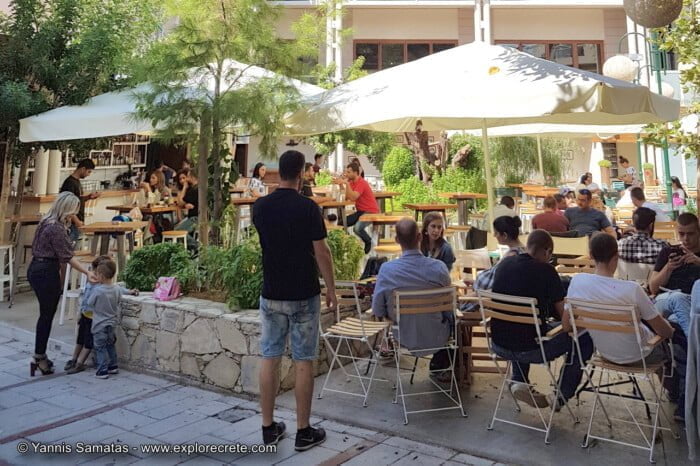Eleftherias Square in Heraklion
Heraklion, Eleftherias Square
Eleftherias Square is the main square of Heraklion, near the Archaeological Museum, the Astoria Hotel, the Prefecture and the Gate of Saint George.
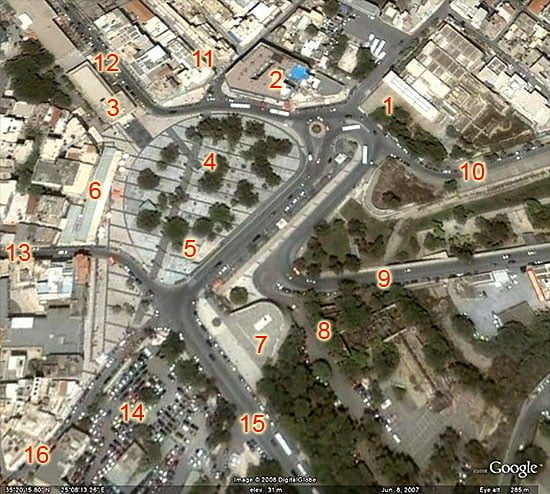
- 1. Heraklion Archaeological Museum
- 2. Astoria Hotel – Bus stop to many parts of Heraklion
- 3. Heraklion Prefecture (Nomarchia)
- 4. Statue of the Unknown Soldier
- 5. Saint George Gate (Pili Agiou Georgiou)
- 6. Cafeterias
- 7. Statue of Eleftherios Venizelos
- 8. Exit of the St George Gate – Municipal Car Park
- 9. Ikarou Avenue, leading to the ferries docks and the Heraklion airport
- 10. Doukos Beaufort Avenue, leading to the harbour and Koules fortress
- 11. Daidalou Street, a commercial pedestrian street leading to the Lions Square
- 12. Dikeosinis Avenue and Law Courts
- 13. Averof Street (to Kornarou Square and Saint Minas cathedral)
- 14. Car Park
- 15. Dimokratias Avenue (to Georgiadis Park and Knossos)
- 16. Idomeneos Street (alleyways of the old town, Vigla neighbourhood, the Venetian walls of Heraklion)
Eleftherias Square, named for Freedom
If we consider that for almost twenty centuries the Cretans rose in revolt after revolt to gain their freedom from various conquerors, we can understand how vital freedom is to every Cretan and how many lives have been sacrificed on its altar. This is why the name of the largest square in Heraklion sounds perfectly suited to its history.
History of Eleftherias Square
[photonav url=https://www.explorecrete.com/wp-content/uploads/2014/11/heraklion-eleftherias-square-L.jpg mode=move popup=none animate=right position=left label=true container_width=700 container_height=668]
The free space where Eleftherias Square lies today was used in the Venetian period as a training ground for the Venetian mercenary army, and was called Campo Marzio or Piazza d’Armi. When the St George Gate was built in the 16th century, the square was renamed St George Square.
In 1628, as part of the ambitious plan to supply Heraklion with water through the Morosini Fountain (Lions Fountain), an aqueduct to the fountain was built northwest of where the Astoria Hotel stands today, supported on three arches. The square was (and often still is) called the Tris Kamares (Three Arches) after the aqueduct, even though the arches themselves were demolished by the Turks in the 19th century.
Eleftherias Square also housed circular underground granaries, in which the Venetians stored grain for emergencies such as sieges, and the large Venetian water cistern on Dikeosinis Street, north of the Prefecture. These too are now lost. The stone cistern had a capacity of 60,000 barrels of water, while the water stored there came from the Pelekita area in Archanes. The cistern, too, was constructed to supply the city in case of emergency. Let us not forget that Heraklion was essentially a massive fortress, which thanks to its fortifications and secondary installations was able to withstand the Turkish siege for 22 years.
Later, during the Turkish period, Eleftherias Square was an open space.
On the declaration of the semi-autonomy of Crete under the suzerainty of the Sultan in 1898, the Great Powers stationed troops on the island to maintain order. They left on 26 July 1909. British troops were stationed in Heraklion, originally camping on the walls and training in the square, as the Venetians had done centuries earlier.
At the turn of the 20th century, the square was the inhabitants’ main recreation area. Some time later, in the mid-20th century, part of it became a park with a cement wall and railings, which was locked every night. Until 1975, Eleftherias Square was the focal point of people’s Sunday stroll. Young and old walked from the Kapetanakeio School (east of the square) towards the statue of Venizelos, crossed Eleftherias Square and continued down Dikeosinis Avenue to the Meidani, the central crossroads of Heraklion, near the Lions. They then strolled back to the square, repeating the exercise until they were tired.
The most recent restructuring of Eleftherias Square was intended to give the centre of Heraklion a modern look and the air of a major European city. The square, retaining some of its eucalyptus trees, was paved with marble, acquired minimalist benches, and was decorated with metal pylons symbolising ships’ masts, reminiscent of the city’s maritime history. The people of Heraklion have never been happy with this new square and there are ongoing discussions about changing it.
Today Eleftherias Square, with its public services (Νο 3), Archaeological Museum (Νο 1) and cafeterias (Νο 6), hums with life. It is a favourite rendezvous point for older people, although the younger crowd prefer the Lions Square and the cafés in Korai and Milatou Streets (parallel to Dedalou Street, No 11).
Heraklion Archaeological Museum
On the eastern side of Eleftherias Square is the Heraklion Archaeological Museum (No 1).
The Minoan civilisation, the first in Europe, is revived through the exhibits allowing visitors to admire it in its full historical sequence. This is one of the most important museums in Europe and the only one in the world to house the treasures of the Minoan civilisation. The 20 rooms house finds from the Neolithic to the Roman period, arranged in thematic and chronological order.
- Read more about Heraklion Archaeological Museum
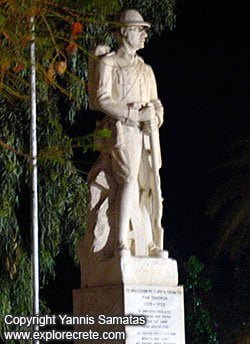
The statue of the Unknown Soldier
In the centre of Eleftherias Square stands the statue of the Unknown Soldier (Νο 4), a 20th-century work. On national days (25 March and 28 October) and on the anniversary of the Battle of Crete, the Heraklion authorities lay wreaths there in honour of those who gave their lives for liberty.
Heraklion Prefecture (Nomarchia)
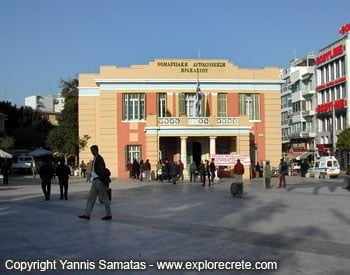
The history of the Heraklion Prefecture building (Νο 3), in the southwest corner of Eleftherias Square, goes back to the Venetian period and the construction of the St George barracks in 1585.
The Turks later modified the Venetian building and used it as the barracks of the Imperial Janissaries. In 1625 the Turkish barracks had a 200-metre-long central corridor and 200 rooms on two storeys for the guard, as well as special rooms for the officers’ quarters. The Turkish kislades (kişla means barracks in Turkish) were destroyed in the great earthquake of 30 September 1856 which devastated the whole city, and were abandoned.
In 1883, construction of the new barracks began under Athanassios Moussis, the architect of Agios Minas and Agios Titos. Building materials included architectural elements from Knossos, while the ornate main entrance of marble on the north side is from the Monastery of St Francis, which stood where the Archaeological Museum is now. The building is in the Neoclassical style of the period, its severe design relieved by very little decoration.
The building housed the Gymnasium (Secondary School) in 1898-1907; the Archaeological Finds Collection of Heraklion until the Museum was established in its present position; the “Cretan Civil Guard”, i.e. the first regular army of Crete during the period when the island was under the Sultan’s suzerainty; the German Command (Kreiss Kommandatur) in 1942-44; while the basements were used as the central city prison from 1885 onwards.
Today the building has been divided into three parts, housing the Prefecture, the Law Courts and the Heraklion Police Headquarters.
© explorecrete.com All Rights Reserved. Reproduction or copying without permission is prohibited.

